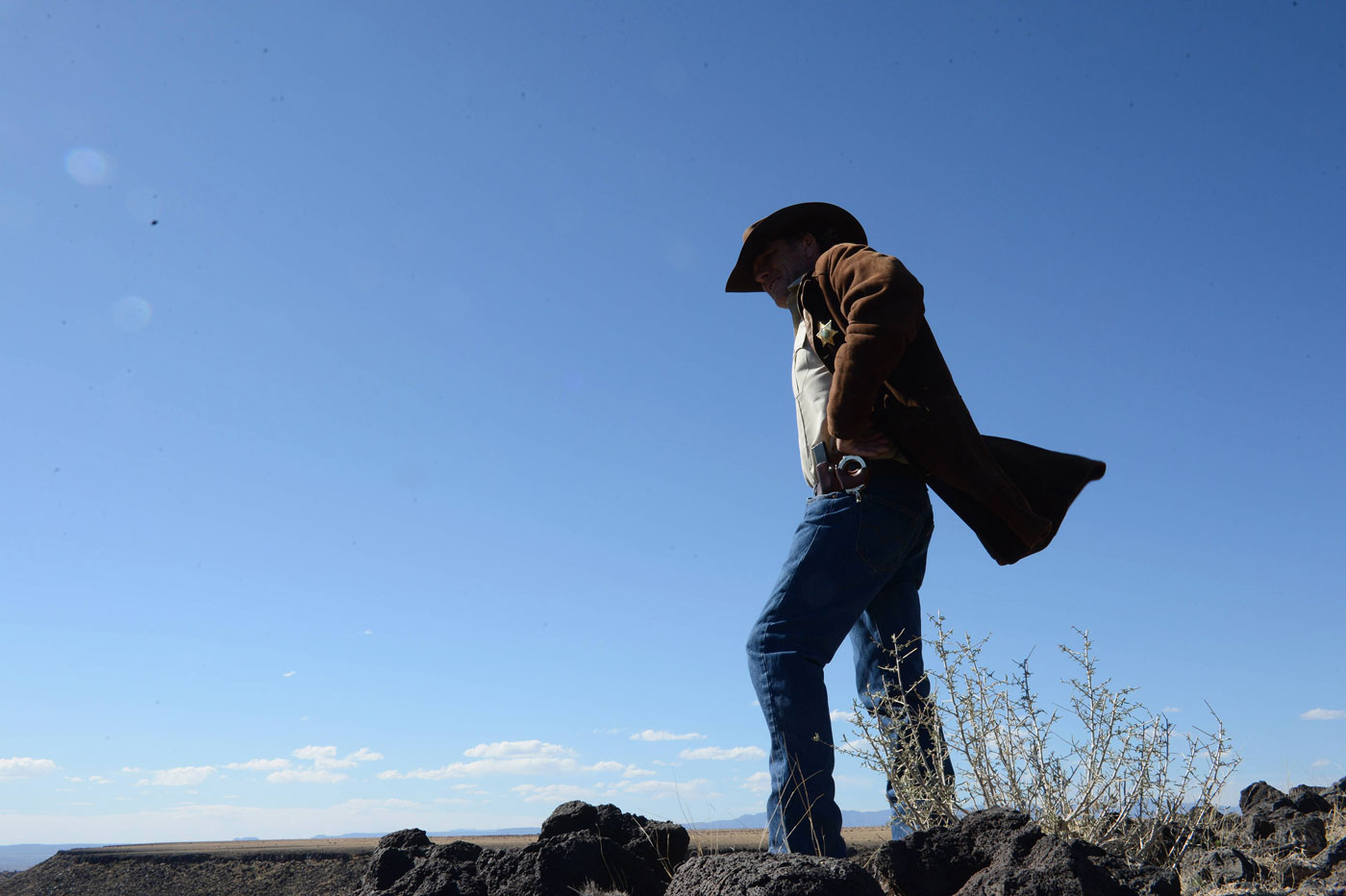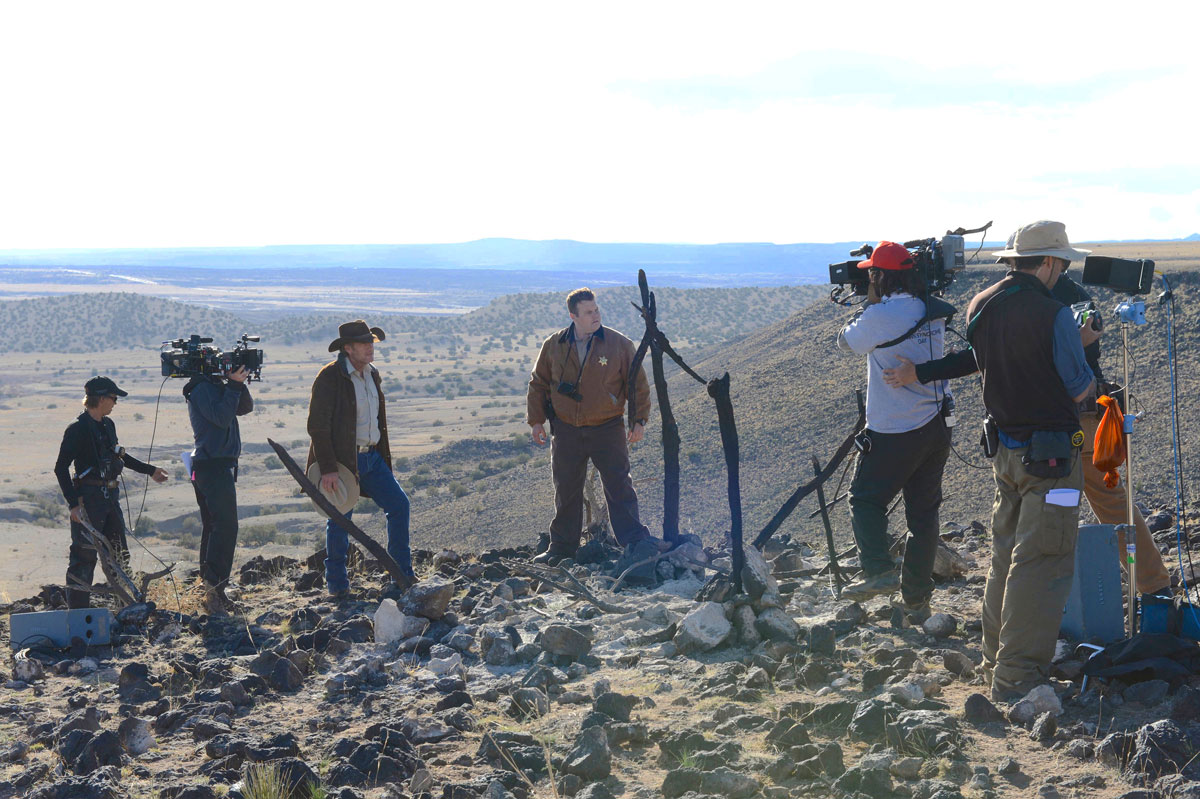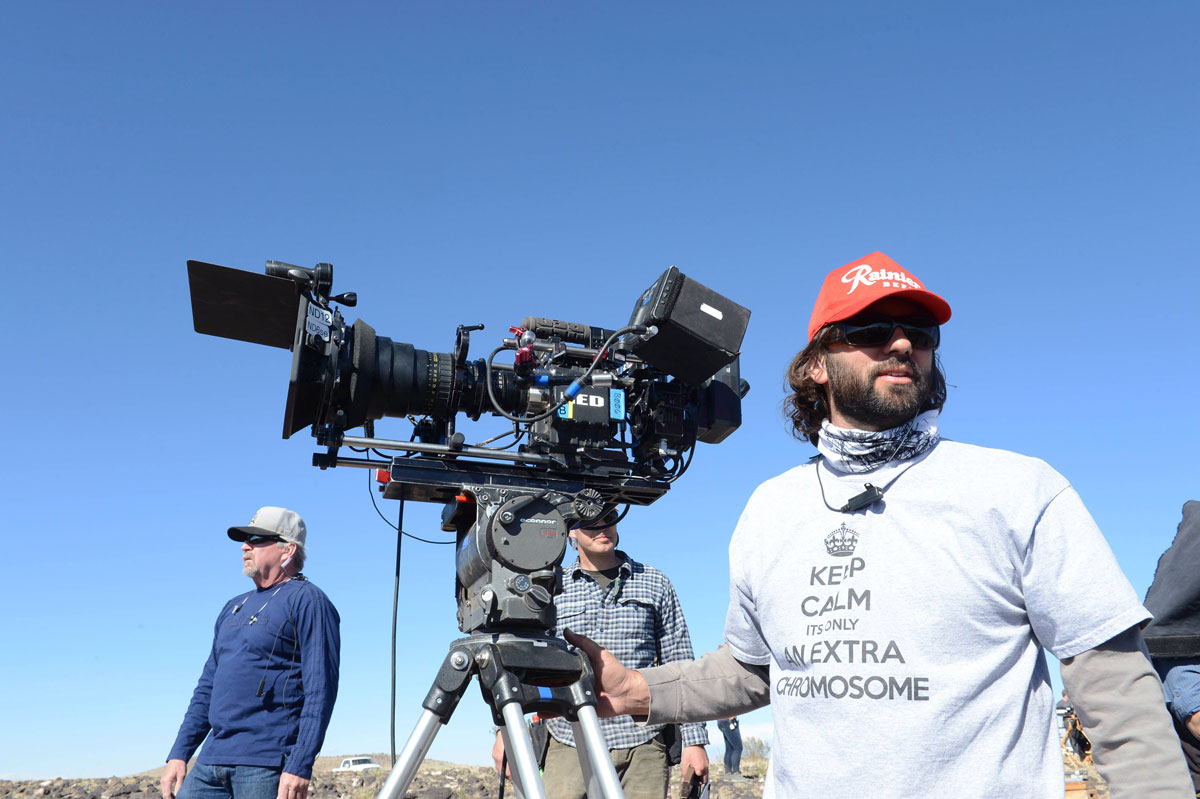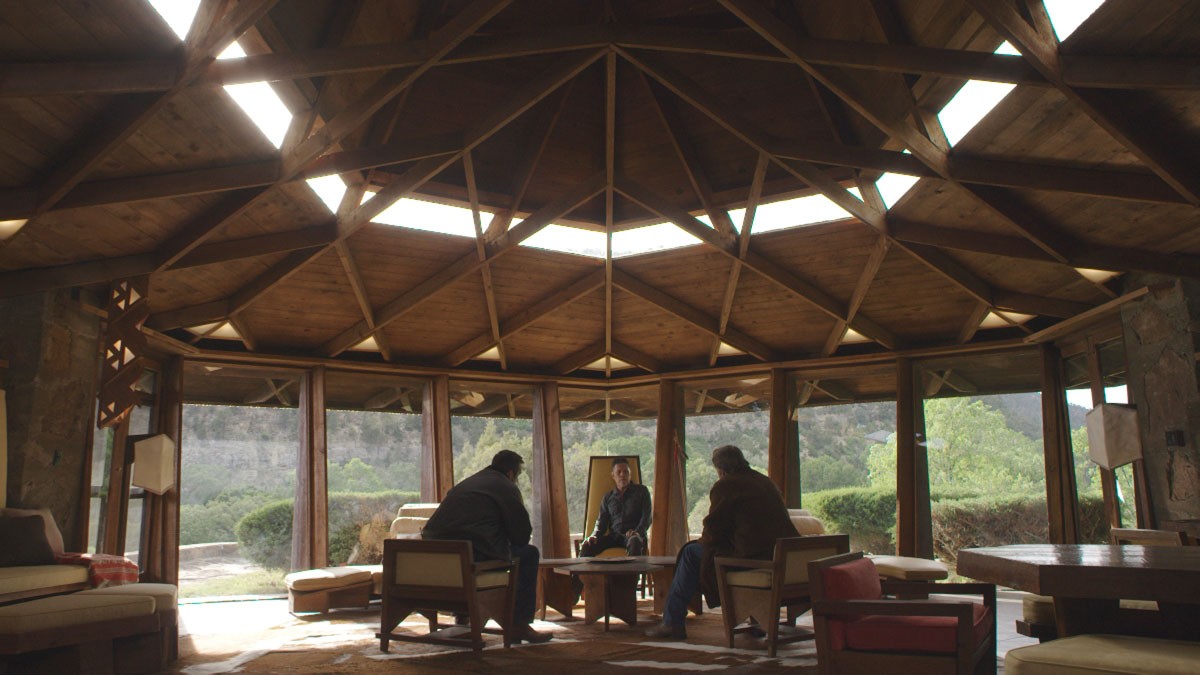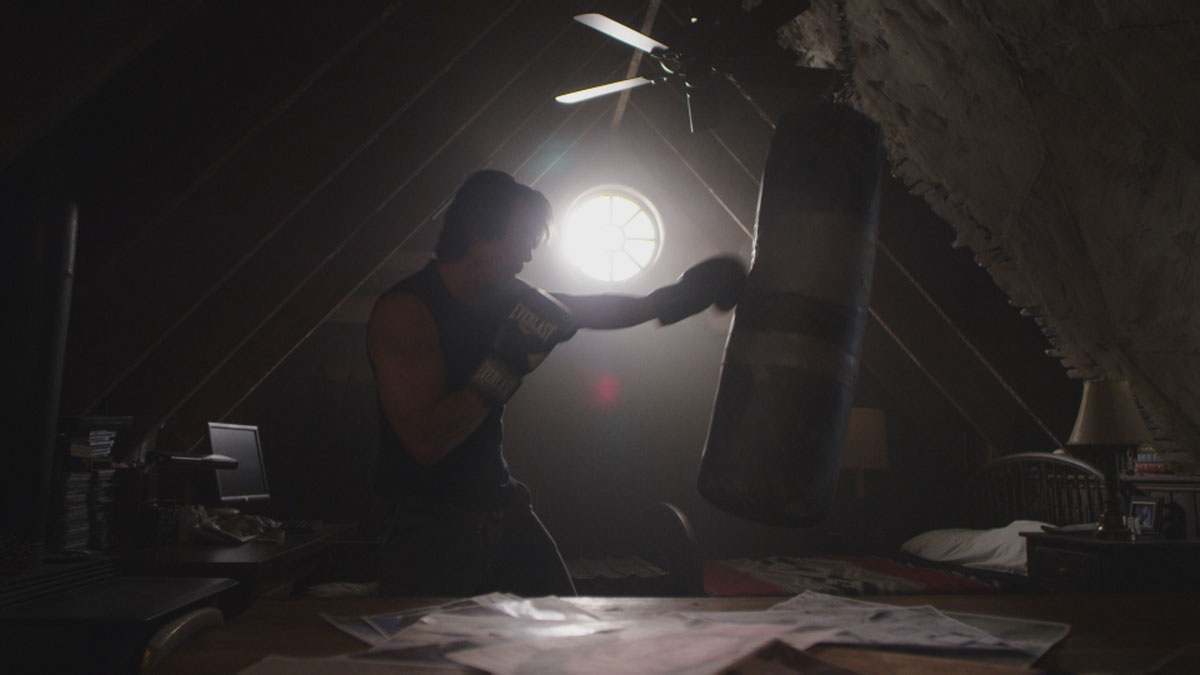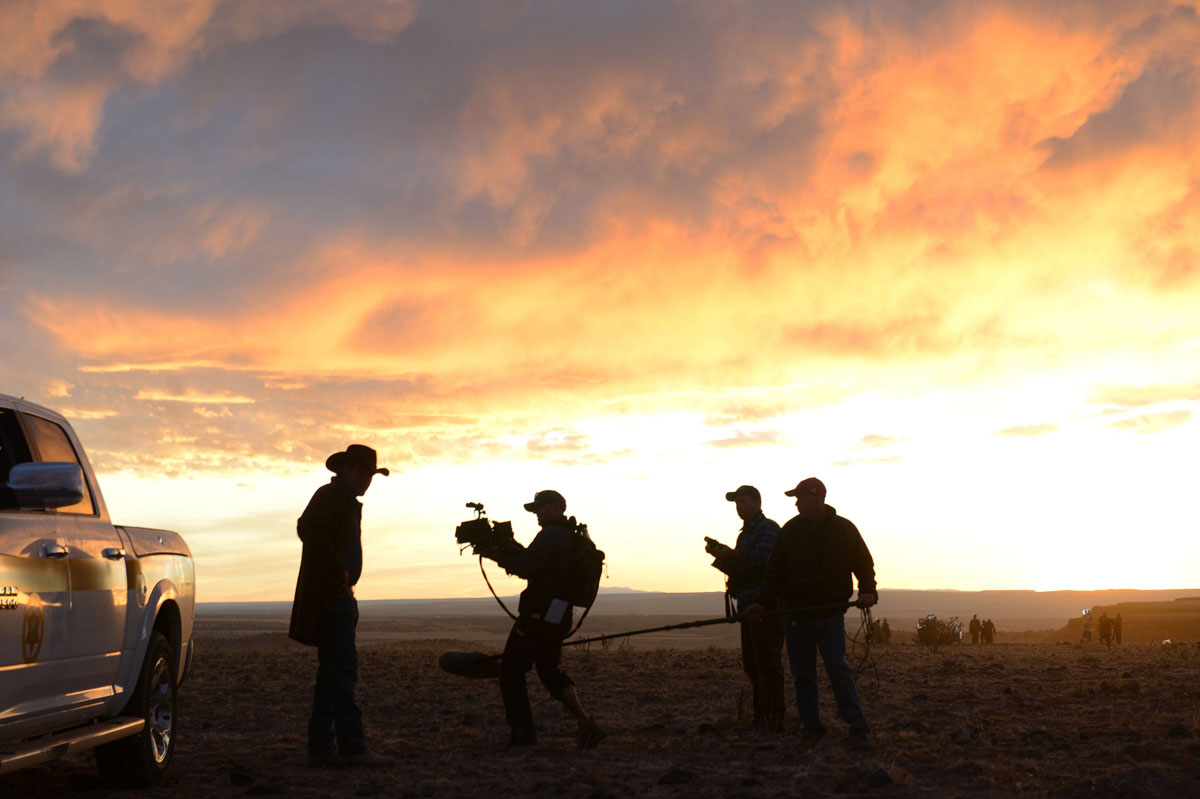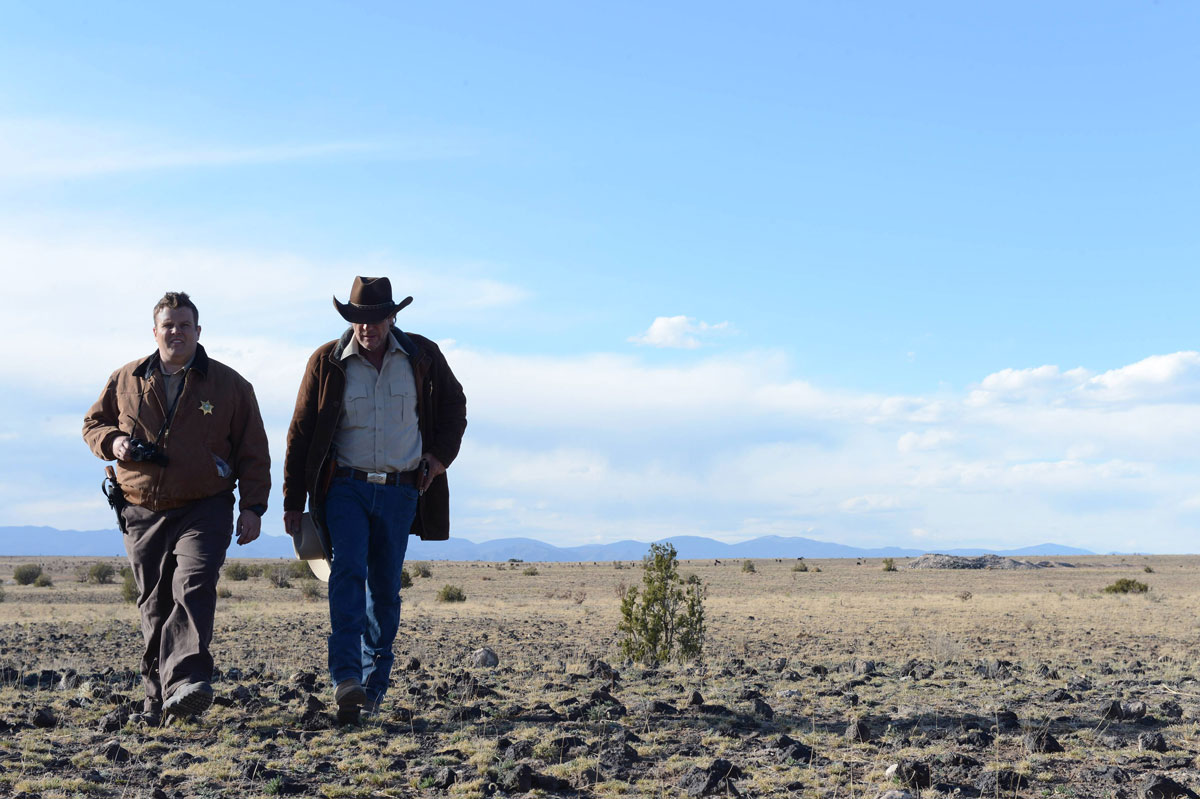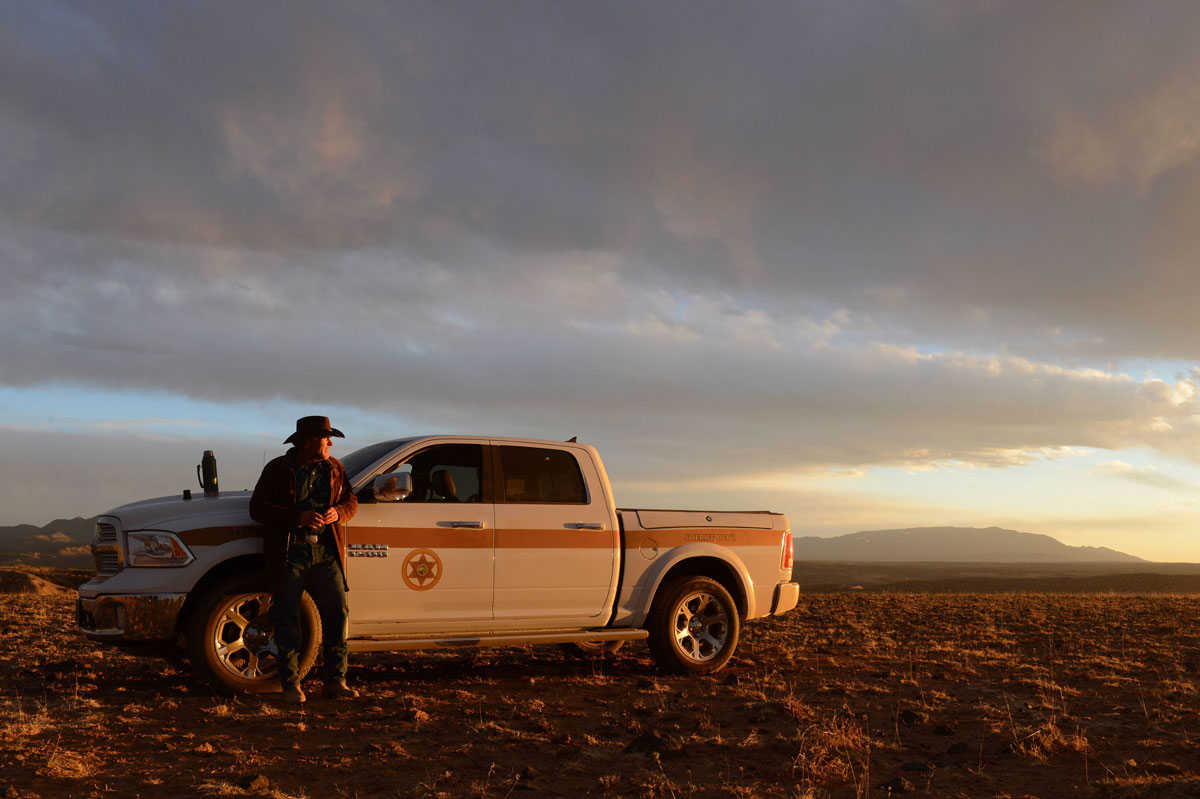Netflix reinvents the western for the binge-watching generation. By Pauline Rogers.
Fans of the Western genre are thrilled that Netflix has reinvigorated the format with its contemporary crime drama, Longmire (based on the Walt Longmire Mysteries series of novels by Craig Johnson). The show features an introspective (and recently widowed) hero (played by Robert Taylor), whose faith of duty and tragic past provides a true Western backstory. The show also serves up a Cheyenne Indian tracker (Lou Diamond Phillips), a female deputy, a lawyer daughter and an overly ambitious male deputy – all supported by well rounded recurring guest starts and solid story plots. Like we said: Western fans are rejoicing.
Of course, the look and location have a lot to do with Longmire’s popularity, which is ably lensed by Cameron Duncan, who rotates with Jim Muro (Guild DP’s Dana Gonzalez and Tod Dos Reis have also lensed episodes, and Muro has also directed multiple episodes).
“We shoot on location for five or more of the seven days for each episode,” explains Co-Producer Bryan J. Raber. “Locations are often inhospitable to lighting [just ask gaffer Danny Delgado], so we have to be creative. Color is a large portion of each episode, which can range from a thriller to action to cop drama to anything else.”
To support that variety, Raber says the show often pairs directors with writers and even editors and cinematographers, depending on the bend of the story. It’s an interesting and fluid concept – yet it is based on a firm footing. “They are very careful on what script goes to each director, kind of like ‘casting,’” describes Jim Muro. “I know the story that had an ‘adoption’ thru line (Of Children and Travelers) was given to me to direct, because of my closeness to the subject matter. I know they like the work that director Chris Chulack and I do together, so we seem to end up on the same stories.”
“Jim established the style and look when he shot the pilot,” explains Duncan, who was the operator at the time. “In the first year, it was a hybrid of our previous show, Southland, and the classic western film genre. We incorporated a lot of handheld and active camera movements on sliders and jibs, often juxtaposed with big wide still frames. We used a chocolate filter the entire season to add warmth. Our interior Sheriff Station is plenty warm from the set design so I pulled the Chocolate filter, which helps with the stop and then bumped the color temp on the camera to 4100K.”
Things changed in Season 2. In the first episode, the story involved a snowstorm that challenges Longmire’s hero to hunt an escaped convict in the mountains – perfect for pulling the Chocolate filter and embracing tones of blue. Since that episode, Duncan goes back and forth between Chocolate and cool tones, depending on the script and journey.
Longmire is shot on RED Dragons with Angénieux Optimo Zooms, Zeiss Super Speed Primes, and a Leica Telephoto lens system, all supported by Keslow Camera. “They have done an amazing job over the years to make the Reds not only shooter friendly but also assistant friendly,” says Duncan of his evolving capture system. “They helped us to create our ‘combat mode’ camera setup, which is the Dragon stripped down to almost nothing more than a matte box, lens and focus motor. The rest of the system is umbilical to a small backpack containing battery, MDR, and video transmitter.”
The genesis of “Combat Mode” goes back to Southland. Muro, the camera team, and Keslow came up with a solution that centered on the RED ONE, the company’s only system at the time. “By shoving everything (video transmitter, Preston MDR, and battery power) into a backpack, I was able to literally jump from a semi-moving vehicle and chase after our heroes,” Duncan explains. “The configuration became even lighter and smaller as Red developed the Epic and now Dragon.”
“Combat Mode’ has grown to affect the entire ‘tactical’ style of shooting,” Muro adds. “The eyepieces are left behind at the rental house. Every setup is done without someone sitting on a dolly and looking down an eyepiece. Almost every primary setup is on a free-form jib arm that allows a lot of interpretation. We interact with the material, and hone in on what is best for drama, acting and lighting.”
Duncan says that evolution has allowed for even more dynamic handheld work. “Our A-camera operator, Alan Jacoby, can do multiple long takes and be very interpretive and creative,” he observes. “You can literally start the camera on the ground and end in a CU of our actors – no problem.”
This past season Duncan wanted to bring the camera into the faces of characters as they are driving. So Jacoby sat in the console of the Sheriff’s Bronco with his back to the dashboard, and panned back and forth from the driver to the passenger. “There’s a great sense of intimacy which the scene required, and that no other large chip camera could have pulled it off,” Duncan describes. “The shot could have played as a oner – but, of course, we did coverage as well.”
Lighting for the show has also been set free. Delgado uses everything from ARRI 18Ks to Mole 20Ks on the standing stages. Interior practicals often feature HMIs, but if the script warrants, Delgado will employ uncorrected tungsten. Even with night work, the gaffer will shift between uncorrected HMIs for moonlight to Nine-Light Fays skinned with Cyan. “Lighting is hard because of the locations and where we can’t always get Condors in,” Delgado reveals.
Snow is also a factor.
“We have to keep the snow on the ground and keep it fresh as well as make snow,” he adds. “Ritter [fans] blowing. Night shoots. In that first big snow scene, for example, the rigging crews had to keep the snow off the stands, and we weren’t close to any equipment houses for that shot [in the Season 2 premiere]. We had to keep calling in the morning, to get anything brought up. Fortunately, that only happened once.”
Longmire’s plotlines also cover the production spectrum. Duncan cites a recent episode where Lou Diamond Phillips’ character trains for a new career path – a vigilante in support of his native people. “This particular set is quite small but architecturally very interesting – and so far away from something like the snow sequence,” Duncan begins. “We lit the architecture and allowed Lou to have his space while he boxed. Most of my favorite lighting setups come from single sources. Here we bounced a few Pars into a 4×8 silver card. The fill is natural bounce form the interior set.”
The Longmire team also had the chance to shoot in a Frank Lloyd Wright home that had never been used as a set before. “The space was tricky to light and keep the ratios somewhat natural,” describes Duncan. “I worked with [1st AD] Brian Faul to make sure we shot in the afternoon so there was backlight. Had we shot early in the day, the background would have been blown out. There are also two 18Ks going through diffusion on either side of the house just past the windows. We used a bounce behind camera to fill in the shadows and balance the light ratios to our liking.”
The show’s workflow has been key to its strong visuals. Duncan relies heavily on DIT Timothy Gregoire, who, in turn, has worked closely with MTI director of development Randy Reck and MTI founder Larry Chernoff to implement MTI’s Cortex software, which Gregoire calls “the backbone of the post process all the way up to just before final color,” and which Reck describes “as an intuitive user interface,” that’s a hit with both with on-set DITs as well as the near-set dailies operation.
Gregoire says his role begins long before principle photography. He brings his complete DIT rig to the post facility handling dailies and final color (which are both handled by MTI). “There we test everything from start to finish,” Gregoire continues. “We compare color calibration on my equipment, side-by-side with the gear used in dailies and final color, and then make any adjustments if required. This ensures image continuity throughout the workflow and gives me the confidence to guarantee that the DP’s intentions are accurately being communicated to post. As a DIT, image continuity is a must-have.”
Gregoire typically wrangles three running cameras, which are shooting 5K at a 5:1 compression ratio (the production will shoot 6K for big wide shots), which means an average storage requirement of 1.5TB per day. “That’s a lot of material to transfer and still deliver the expected short wrap times at the end of the day,” Gregoire observes. “All of the shuttle drives are now Solid-state, and interface with my DIT workstation via eSATA 6G or USB 3.0. This allows for multiple card downloads to both my onboard storage array and the shuttles simultaneously without bottlenecking. Since my move to Solid-state, transfer times have dropped to a third of what they once were.”
On-set functions for Gregoire begin when he gets his first RED Mags. Using Cortex for Windows 7, he ingests all cards to both an onboard-protected Raid drive, and the morning SSD shuttle drives. Cortex will transfer and verify up to three cards simultaneously. Once the transfer is complete, it will load all clips into a “list” window.
“It is here where one can log, grade, sync, transcode and even scan footage for dead pixels or dirt in the frame,” Gregoire explains. “For Longmire, I only log all the footage and then grade the last take of each setup on each camera.”
Gregoire will also grab reference stills for later review by Duncan or Muro, and eventually post. “Periodically, the DP will review my grades and select ‘hero’ shots that should be forwarded to the dailies colorist to use as a guideline when coloring that scene,” he adds. “I will also mark each selected clip in Cortex as a ‘hero’ shot as well as enter any comments, concerns or specific intentions for the shot. We repeat this process throughout the day, sending a ‘film break’ on shuttle drives at lunch that contains just the footage and accompanying audio.
“I also export the Cortex Manifest file,” he continues. “This file contains a history of everything that happened in Cortex that day – from download info and logging, to CDLs and LUTs that may have been applied. It has all the notes from the DP and myself. I put the Cortex Manifest file along with a PDF version of it on the shuttle drive. This drive is sent to the near-set dailies facility.”
Reck says the Cortex Manifest file creates an easy way to package up all metadata and all color correction, sync, LUTs and file organization in order to move the information through the workflow pipeline. “The traditional questions from the dailies operator to the on-set DIT,” he says, “are no longer needed as the Cortex Manifest carries all the answers down stream. This seamless flow of metadata continues into VFX pulls and all the way into the final color session.”
“We couldn’t do this show without MTI’s Manifest,” Raber insists. “Tim [Gregoire] will work with our DPs and use their concept to create looks on set. ‘Let’s add blues.’ ‘Let’s play with color.’ They use the software to manipulate looks from camera masters and find the look – which is never baked into any footage.
“In addition to the color congruency from set to post, the Manifest carries with it a log of the data itself, a massive quantity of data,” Raber continues. “We are immediately alerted should something become corrupt or missing at every stage of the workflow.”
At the near set facility, the footage is ingested to a protected Raid drive as it comes in from set using Cortex. A dailies operator will sync the sound on the footage in Cortex and then import Gregoire’s Cortex Manifest file. This will seamlessly add all the information generated on set – grads, LUTs, notes, and download info.
“Our dailies colorist in L.A. can then log into the dailies workstation that’s near-set in New Mexico to grade the footage based on the CDLs and notes approved by the DP on set,” Gregoire continues. “All the ALEs generated for editorial contain the metadata that was generated in Cortex. A new Cortex Manifest file is exported that contains all the information from set as well as all new info entered [color, sync, logging etc.] This is sent back to post and editorial for reference and easy material tracking.”
Workflow aside, Duncan and Muro both describe Longmire as a constant challenge – but also a constant source of unending creative possibilities. The move to a streaming channel, for example, has altered their approach. “Prior to Netflix, we had to deliver a 44-minute show, with act breaks,” Muro concludes. “We had to cut a lot of the more significant beautiful moments to make our show short enough. Now, the episodes seem to ‘breathe’ a whole lot more. We have more room for great shots that convey emotion, and not just drive the story.”
“It’s a unique experience,” Duncan adds. “Quite often shows are stuck to a formula and [visual] lexicon that creates a box around the creative team. With Longmire, the producers tell each director up front to just ‘go and make your movie,’ which gives them great deal of freedom.”
Both Munro and Duncan agree that rotating cinematographers enhances the creativity and uniqueness of the series. With the series being out of the studio five to seven days and often on remote locations, prep time is invaluable. “It also gives the director and [DP] time to process the material and create together, as opposed to meeting a new director on set and then having to shoot six to eight pages of the script on Day 1,” says Duncan.
“I don’t understand that philosophy,” he adds. “I feel that more and more location heavy shows are going away from that old ideology. In the end, it’s not only a creative benefit to the show, but also a financial one. It gives the cinematographer time to process the material, which leads to more creativity, and they’ll be more prepared for each day, which will save the company time, and money. At least – that’s my opinion.”
Lead Image: Robert Taylor as Sheriff Walt Longmire / Photo by Ursula Coyote

